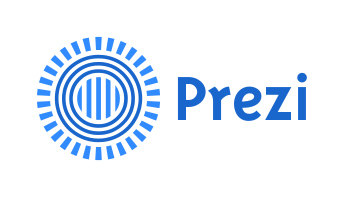
This Influencer post originally appeared on LinkedIn. Peter Arvai shares his thoughts as part of LinkedIn’s Influencer series, “Let’s Fix It” in which the brightest minds in business blog on LinkedIn about how they would fix what’s broken in this world. LinkedIn Editor Amy Chen provides an overview of the 60+ Influencers that tackled this subject as part of the package. Follow Peter Arvai and insights from other top minds in business on LinkedIn.
Until recently, I never realized the power of making a mistake in a meeting. Of course, there’s always that initial moment of dread, followed by the internal dialogue—“Did I really just say that?” or “Did everyone see that?”
Even though they may be embarrassing at first, however, mistakes offer an opportunity to use one of the most under-appreciated leadership tools: vulnerability.
I’ve often felt the expectation that I need to be perfect to be accepted as a leader, but I have come to realize that revealing my imperfections actually empowers my team. Being vulnerable changes the conversation from one where team members feel they have to prove themselves to one where they are free to think big and take risks.
Our society is facing huge challenges, from poverty to disease to climate change— these are challenges that are in need of creative leadership to find solutions. If we want our teams to tackle these issues efficiently, we need to ditch the traditional model of leadership. Let’s support vulnerability instead of fixed structures in order to fuel the creative engines that business requires to thrive at today’s breakneck pace; here are some tangible examples I’ve seen work:
Reduce judgment by getting personal.
Fear of judgment is an instant killer of creativity and risk-taking—when people are worried that others will judge them for their ideas or flaws, they shut down. We can create a safe space for free thinking by being completely open. Sheryl Sandberg is an example of a leader who shows vulnerability by being open.
During her 2010 TED Talk, Sandberg recounted a story that many parents can relate to: her 3-year-old daughter clung to her leg before she left for a conference, begging her not to get on the plane. Sandberg’s openness about her personal struggle with managing time between work and family sends a clear message—there’s no room for judgment in the auditorium. What’s more, Sandberg’s presentation opened up space for working parents around the world to be open about their own struggles, which in turn resulted in real changes, like daycare programs at offices in increasing numbers. That’s the power of vulnerability in action.
Share your mistakes.
Another obstacle in the way of big thinking and creativity is fear of failure. By openly promoting that mistakes are an important part of adapting and growing, leaders can empower those around them to let go of the stifling need to be perfect, so they can risk more to achieve more.
A.G. Lafley, the CEO of Proctor & Gamble, openly talks about his company’s failure in the 1980s to enter the bleach market — what was a spectacular flop at first actually taught the brand how to defend existing franchises and helped to contribute to the massive success of Tide, P&G’s laundry detergent.
At Prezi, we encourage open discussions about our failures in an effort to learn from our mistakes. For example, we celebrate “hero teams” (which we recognize at the end of a quarter), or those who fell below their original goal but who might have worked harder and applied creativity to solve unexpected problems along the way. By recognizing such work even when it leads to failure, we encourage our teams to take risks, which often leads to some of our best ideas.
Build a candid culture.
It isn’t always easy to be completely honest, especially when talking about personal flaws. Candor, however, is fundamental to building a culture of creativity. When people spend less time thinking about what they should or shouldn’t say, they can spend more time thinking about the stuff that really matters: their ideas.
There is tremendous value in having an open culture. I have a tradition of taking colleagues out for one-on-one “dream dinners,” where I ask them to tell me about their goals and aspirations. By asking them to be completely honest, I enable us to be vulnerable both ways. They might tell me something I don’t want to hear—like the fact that our senior engineer wants to start a company of his own—but in exchange, we build more authentic and rewarding relationships.
Two years later, that senior engineer is still with us, and now we can talk entrepreneurship when he has questions or ideas. Authentic relationships foster better collaboration and bigger thinking, both of which are essential to creative success.
Encouraging and supporting vulnerability may seem idealistic, but it’s critical to success. When it comes to tackling the biggest problems in business and society, creativity is necessary to find better solutions. But for creative ideas to emerge we also need vulnerable leaders who are comfortable with looking at themselves and their organizations from unexpected perspectives.
Let’s embrace the imperfect and let it inspire us.
In this series of posts, Influencers explain what they wish they could fix — and how. Read all the stories here and write your own (please include the hashtag #FixIt in the body of your post).
More Must-Reads from TIME
- Why Trump’s Message Worked on Latino Men
- What Trump’s Win Could Mean for Housing
- The 100 Must-Read Books of 2024
- Sleep Doctors Share the 1 Tip That’s Changed Their Lives
- Column: Let’s Bring Back Romance
- What It’s Like to Have Long COVID As a Kid
- FX’s Say Nothing Is the Must-Watch Political Thriller of 2024
- Merle Bombardieri Is Helping People Make the Baby Decision
Contact us at letters@time.com